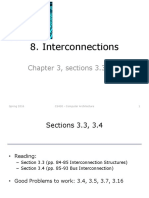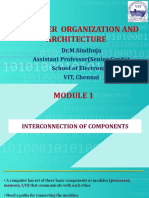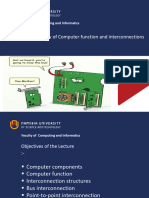0% found this document useful (0 votes)
56 views5 pagesInterconnection Structure Presentation
The presentation discusses the interconnection structure between the processor and memory in computer architecture. It covers the main components such as data, address, and control buses, as well as different types of interconnection structures including single bus, multiple bus, crossbar switch, and multistage network. Understanding these concepts is essential for designing efficient computer systems.
Uploaded by
tasriftanim2002Copyright
© © All Rights Reserved
We take content rights seriously. If you suspect this is your content, claim it here.
Available Formats
Download as PDF, TXT or read online on Scribd
0% found this document useful (0 votes)
56 views5 pagesInterconnection Structure Presentation
The presentation discusses the interconnection structure between the processor and memory in computer architecture. It covers the main components such as data, address, and control buses, as well as different types of interconnection structures including single bus, multiple bus, crossbar switch, and multistage network. Understanding these concepts is essential for designing efficient computer systems.
Uploaded by
tasriftanim2002Copyright
© © All Rights Reserved
We take content rights seriously. If you suspect this is your content, claim it here.
Available Formats
Download as PDF, TXT or read online on Scribd
/ 5





























































